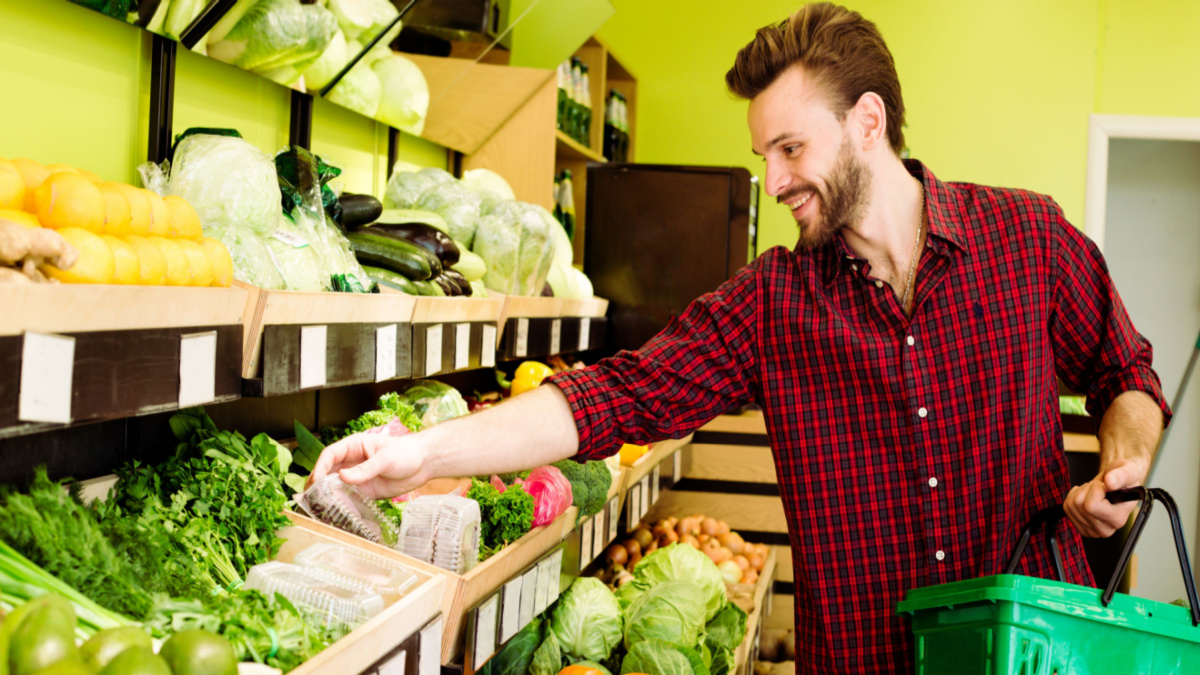How to shop for a healthy diet

Healthy eating often starts with the choices we make at the supermarket, so planning your weekly shop is important. Also planning the food you buy can help save money and reduce food waste.
The best advice to do a healthy, value for money food shop is to check what food you have and do a weekly meal plan, stick to your shopping lists, check use-by dates and make the best use of the food storage available to you. Here’s our guide to healthy food shopping.
Before the shops
1. Plan your meals and snacks
Take time each week to make a meal plan for meals and snacks. When deciding on meals and recipes, check your cupboards, fridge and freezer to see what ingredients you have already. This can save money and reduce food waste. However always throw out food past its use-by date.
When making your meal plan, try to pick recipes that use the same ingredients or leftover ingredients, for example leftovers from roast chicken could be used to make chicken stir fry or chicken fajitas the next day. Here’s information on using leftovers.
And, if you have storage space, buying tinned and dried food in bulk can save money as they have long-shelf lives. Here’s our guide to cupboard essentials.
Including a couple of meat-free meals in your meal plan is good for your health and can help reduce food bills. You can replace meat with beans, peas or lentils which are healthy, can be cheaper than meat or diary and often have a longer shelf life. Here are some vegetarian recipe ideas to get you started.
Your meal plan should include snacks to eat at home and when you are out and about. Having healthy snacks handy means you are less likely to eat treat food, which is high in sugar, salt and fat, when you get hungry between meals. It can also cut down on the money you spend on food when you are on the go. Portable healthy snacks like fruit, popcorn or nuts are great or you could make our healthy oat bars to bring with you.
Try our 101 Square Meals cookbook for affordable and easy-to-cook recipes (you can download the ebook your device) and our three-week meal planner to help you get into the habit of planning your meals.
2. Make a shopping list
When you have completed your meal plan for the week, make a shopping list. This will help you buy what you need and avoid impulse purchases.
3. Shop alone and when you have more time
If you bring your children shopping, set clear rules on what they can put in the trolley before you go into the shop. And if you can do the food shop alone to avoid children asking for food not on your list.
Try to go food shopping at a time when you’re under less pressure, don’t feel stressed or hungry. If you shop later in the day supermarkets often reduce the price of fresh food which can help reduce your bills and food waste.
At the shops
4. Stick to your list
Once you make a shopping list, stick to it. This means you will avoid buying food you may not need.
5. Know your labels
Compare food labels to pick the healthiest item and the best value. Check:
- Sugar, fat and salt content
- Serving sizes and amounts
- Prices
To help you make healthy choices here’s our guide to understanding nutrition labels.
Check use-by dates to buy food that will last longer. These dates tell you when you have to have eaten the item. Keep in mind this phrase: “Treat Best Before as a guideline and Use By as a deadline”. Here’s more on use-by and best-before dates which will not only reduce food waste but could help you save money.
6. Beware of special offers
Avoid “special offers” unless they are on your list. Our research as shown that a third of foods on special offer are high in sugar, salt and fat. That said, offers on healthy food can be cost effective, so use your judgement.
7, Avoid prepared food
Prepared fresh food, like chopped vegetables or grated cheese, can be more expensive as it often costs more for a smaller amount.
8. Check food packaging
Don't buy food with damaged packaging. Cans should be free from dents or bulges and other packaging should be free from damage or leaks.
9. Bag your groceries safely
Pack cold foods together and separate raw meats, poultry, and seafood from other foods. Regularly cleaning reusable bags in the washing machine, will help avoid bacteria contaminating food.
After the shop
10. Get cold foods home fast
Take frozen and chilled foods straight home to the fridge and freezer. Use a coolbag or coolbox to keep your groceries cold during the trip, particularly in warm weather or if you have a long journey. Never leave food sitting in a hot car.
11. Store your food carefully
Storing food properly is important to keep it safe to eat for longer, reduce waste and food bills. It’s also important to put meat raw meat, fish and poultry on the bottom shelf so that they don’t touch other food. Don’t over pack a fridge which could make it difficult for the cool air to circulate. Here’s our guide to getting the best use out of your fridge.
Freezing is a great way to store food and freezing cooked meals can help you stick to your meal plans. Here’s our guide to batch-cooking to eat later.
You can reduce waste by freezing food if it is near its use-by date – do check packaging to see if it is suitable to freeze. If food is properly frozen it will stay safe to eat indefinitely, though after a time the taste and texture may suffer. Here’s our guide to getting the most out of your freezer.




